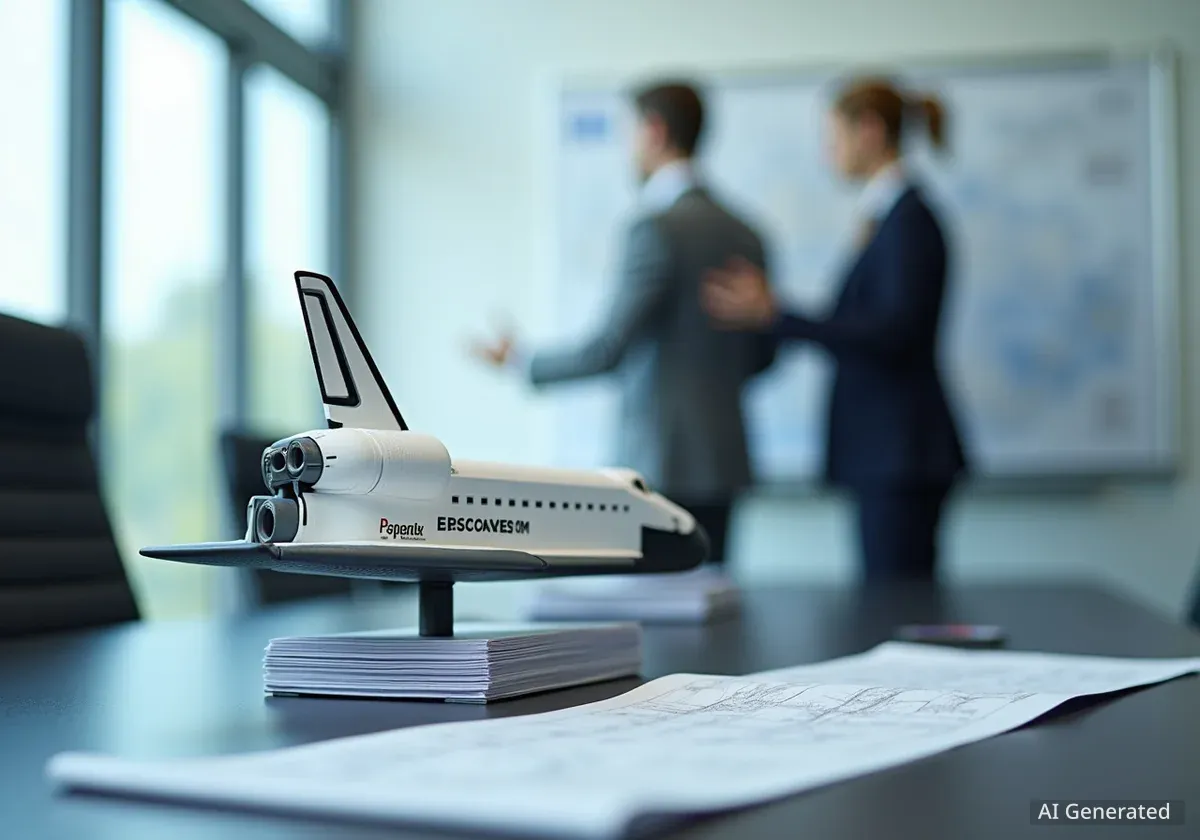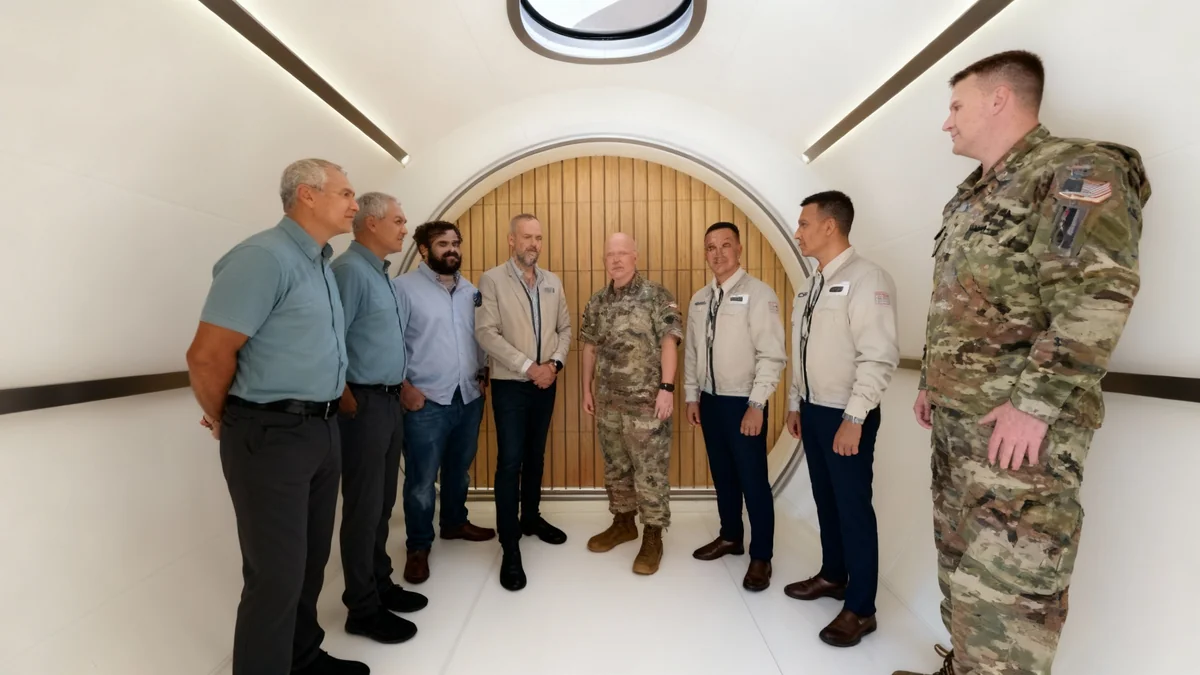A significant disagreement has emerged over the cost and logistics of moving the Space Shuttle Discovery from its current location in Virginia to Houston, Texas. NASA and the Smithsonian Institution have estimated the move could cost up to $150 million and require the historic orbiter to be disassembled, a figure that Texas lawmakers are strongly disputing.
The office of Senator John Cornyn (R-TX) has countered with a much lower estimate of $5 million to $8 million from an independent vendor, asserting that the shuttle can be moved intact. This dispute places the future of the iconic spacecraft at the center of a political and financial debate between federal agencies and Texas officials.
Key Takeaways
- NASA and the Smithsonian estimate relocating Space Shuttle Discovery will cost between $120 million and $150 million.
- Texas Senator John Cornyn's office cites an external vendor's estimate of only $5 million to $8 million.
- A primary point of contention is whether the shuttle must be disassembled for transport, which lawmakers say is unnecessary.
- The proposed move is supported by an $85 million provision in the 2025 budget reconciliation bill to bring a shuttle to Houston.
Conflicting Estimates Fuel Relocation Debate
The debate over moving Space Shuttle Discovery is centered on two vastly different cost projections. A joint estimate from NASA and the Smithsonian Institution places the total cost between $120 million and $150 million. This figure includes complex logistics, such as disassembling the orbiter for transport.
However, Texas lawmakers argue this estimate is inflated. A spokesperson for Senator John Cornyn's office stated the figure was "purposefully overblown." They presented a competing estimate from an outside vendor specializing in moving large military equipment, which puts the total cost in the range of $5 million to $8 million.
"The NASA estimate for transport was only $5 million, further proving that unnecessary storage and disassembly expenses make up the vast majority of alternative and exorbitant cost estimates like this," a spokesperson for Cornyn's office told The Register.
This lower estimate reportedly covers transportation from the Smithsonian's facility to a barge and the subsequent journey to Space Center Houston, all without the need for disassembly.
The Question of Disassembly
A critical element of the dispute is the technical requirement of dismantling the shuttle. According to the Smithsonian and NASA, Discovery's wings would need to be removed for the vehicle to be shipped safely. This process would significantly add to the complexity and cost of the project.
Senators Cornyn and Ted Cruz have challenged this assertion directly. In a formal letter, they claimed the Smithsonian "falsely" stated that the shuttle's wings must be removed. Cornyn's office reinforced this point, referencing previous shuttle relocations.
How Shuttles Moved in the Past
When the Space Shuttle fleet was retired in 2011, the orbiters were transported to their museum homes using specially modified Boeing 747s known as the Shuttle Carrier Aircraft (SCA). These aircraft flew the shuttles piggyback style across the country. However, the SCAs have since been retired, with one now on display at Space Center Houston. Without the SCAs, any future move requires ground and sea transportation via roads and barges.
The senators' argument is that since other shuttles and full-scale replicas have been successfully moved without being taken apart, Discovery should be no different. The current proposed method involves a journey by road to a waterway, followed by a trip on a barge.
Historical Precedent for Large-Scale Moves
Several companies have experience moving space shuttle-sized objects, lending weight to the argument that a move without disassembly is feasible. These past projects serve as a reference for what the Discovery relocation could entail.
- Space Shuttle Enterprise: This test orbiter was transported by Weeks Marine on a barge from JFK International Airport to the Intrepid Museum in New York City.
- Replica Independence: The company Beyel Brothers moved this full-scale replica from Kennedy Space Center in Florida to Space Center Houston via an ocean-going barge.
- Replica Inspiration: Beyel Brothers was also responsible for moving this shuttle mock-up.
These examples demonstrate that moving large, delicate aerospace hardware via barge is a proven method. The key question is whether the authentic, space-flown Discovery presents unique challenges that necessitate the drastic step of disassembly.
Shuttle Relocation Costs in 2012
According to reports from 2012, the cost of the final ferry flights for the retired shuttles using the Shuttle Carrier Aircraft was approximately $8.3 million in total. This historical figure is much closer to the estimate provided by Senator Cornyn's office than the current one from NASA and the Smithsonian.
Legislative Push and Political Tensions
The effort to bring an authentic space shuttle to Houston is backed by federal legislation. The 2025 budget reconciliation bill included an $85 million provision specifically to relocate at least one spacecraft that has flown astronauts to Houston, the home of NASA's Johnson Space Center.
Johnson Space Center has managed human spaceflight for NASA since its inception, and Texas lawmakers have long argued that it is the rightful home for a retired orbiter. The political pressure from Senators Cornyn and Cruz has been consistent since they began advocating for the move in April.
The sharp language from Senator Cornyn's office highlights the political friction surrounding the issue. A spokesperson expressed frustration with the Smithsonian's position.
"Discovery belongs in Houston, and will make the journey there safely, securely, and efficiently in accordance with the law whether the woke Smithsonian and its cronies in Congress like it or not," the spokesperson stated.
While the Smithsonian's letter indicated that NASA was involved in developing the high cost estimate and disassembly plan, the political criticism has been aimed primarily at the museum institution. As the debate continues, the final decision will depend on reconciling the technical assessments from NASA with the logistical precedents and political will driving the relocation effort.





